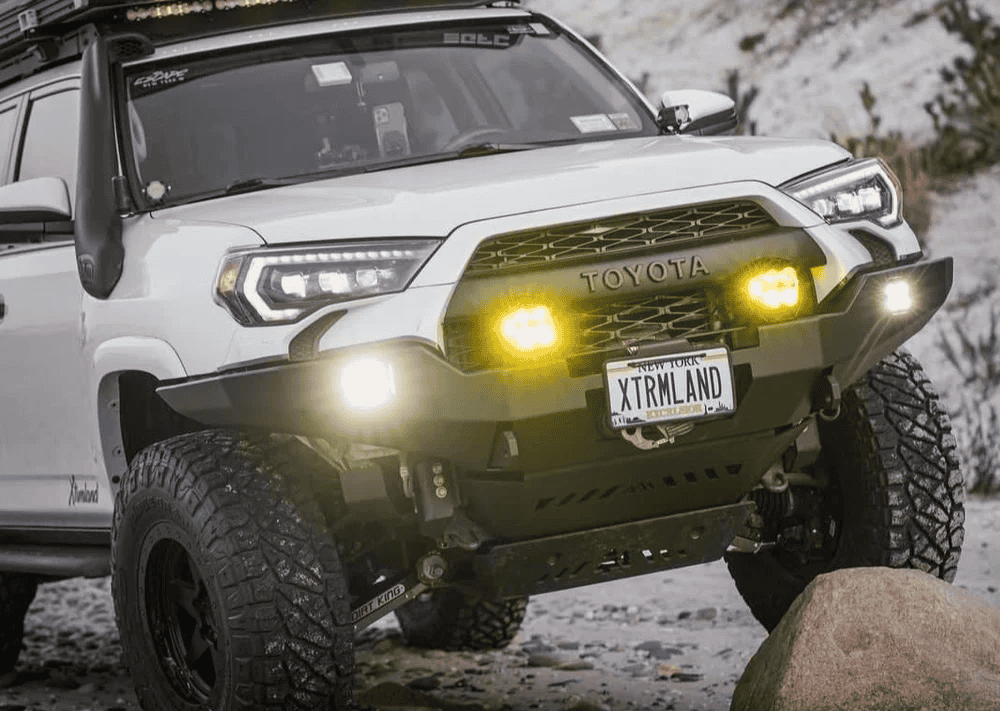Overland Vehicles

Rugged overland engineering starts with a structure that resists twist, impact, and long term vibration. Frame rails and substructures should distribute load evenly, keeping stress out of thin sheet sections and into reinforced members. Weight planning matters as much as horsepower. Heavy items live low and centered to control center of gravity and preserve predictable handling. Approach, breakover, and departure angles define where you can travel, so bumper design, receiver placement, and spare storage should respect ground clearance.
Corrosion protection extends longevity. Zinc rich primers, sealed fasteners, and thoughtful drainage fight trapped moisture. Hardware choice is not only about strength but also serviceability. A bolt you cannot reach in the field is a liability. Use thread engagement that tolerates minor galling and pack a matching tool kit so trail fixes are realistic.
Suspension is the translator between terrain and cabin. Matching spring rate to total mass keeps ride height consistent under load. Geometry that controls camber and toe through the motion range helps tires track straight in chatter. Damping does the real work. Shock tuning sets rebound to control wheel return and compression to manage impacts without heat fade. Progressive bump stops protect the last inch of travel. Bigger tires add sidewall compliance but increase unsprung weight, so choose wheel and tire packages that balance traction, steering feel, and braking distance.
Reliable power starts with correct energy math. Battery chemistry, capacity, and discharge rates must match your duty cycle. A quality battery management system and a properly sized DC to DC charger allow safe alternator charging while solar handles idle days. Keep high draw loads on short, fat runs and isolate sensitive electronics to avoid voltage sag. Wire routing should follow smooth paths with abrasion sleeves, grommets through bulkheads, and drip loops that shed water.
Waterproofing is a mindset. Use weather rated connectors, heat shrink with adhesive, and seals that tolerate vibration. Place fuses where a human hand can reach them. Vent differentials and gearboxes high to avoid water ingestion during crossings. Thermal control is equally important. Engine cooling, transmission heat management, and airflow around underhood accessories prevent derate on long climbs in thin air.
Navigation, comms, and lighting deserve the same rigor. Antennas need clean ground planes. Cable runs should be strain relieved and separated from high current lines to reduce noise. Headlights and auxiliary lighting should prioritize beam pattern and aim over raw lumen numbers. Lux on target is what improves reaction time. Switch logic that uses relays or solid state systems keeps cockpit controls simple while reducing failure points.
Paper plans prove nothing until you gather data on dirt. Start with payload simulations and torque checks, then drive varied surfaces at escalating speeds. Listen for changes, track temperatures, read shock shafts for heat signs, and measure sag after shakedowns. Maintain a log of torque specs and intervals. Fasteners need retorque after the first few trips as materials settle.
Serviceability defines true readiness. Filter access, drain points, and spare storage should be obvious. Mount recovery points to structure that can take a diagonal pull, not just a straight line tug. The tool kit should be curated to the actual hardware sizes on the vehicle. Label circuits and carry printed wiring diagrams in a waterproof folder. A modular interior with removable panels allows quick reach to pumps, fuses, and plumbing without tearing the whole cabin apart.
Preventive checks save trips. Inspect brake pads, tire carcasses, and steering joints before every departure. Carry consumables that match your systems: belts, fluids, fuses, and clamps. Train on winch use, traction boards, and kinetic straps in a safe area before you need them. Good engineering assumes human factors, so make procedures simple enough to perform when tired, cold, or alone.
When it is time to turn these principles into a real vehicle, choose a team that designs around your routes, payload, and season. That means chassis evaluation, honest weight targets, and system integration that favors access and longevity. It also means real testing near handoff, so you leave with confidence rather than guesswork.
OZK Customs applies these fundamentals to purpose built rigs that pair balanced suspension, sealed power systems, and clean interior layouts. Explore our range of solutions on see our overland rigs and learn how a focused package comes together. If you already have a platform and need a measured approach to armor, racks, power, and storage, our custom overland upfit process maps parts to real use. Want to understand our build ethic before you commit, including the way we hand off vehicles and support customers after delivery, read why choose OZK Customs.
Tell us where you are headed and what you must carry. OZK Customs will spec the structure, suspension, power, and interior around your mission, then validate it on the ground before handoff. Our shop turns engineering theory into a dependable vehicle you can service in the field and trust far from pavement. Fill out the form and let us design a rig that fits the way you travel.
At OZK Customs we build overland rigs, custom adventure vans, and commercial ready vehicles with the same attention to structure, systems, and serviceability. From balanced suspension to sealed power and thoughtful storage, every choice is made for reliability and ease of use.
Bring your route, payload, and timeline. We will blueprint a purpose built overland rig with proven components, serviceable systems, and clean integration. Tell us how you travel and we will translate it into a reliable build that is ready for real miles. Start your spec today.
ADDRESS:
6159 E Huntsville Rd, Fayetteville, AR 72701
PHONE:
(479) 326-9200
EMAIL:
info@ozkvans.com